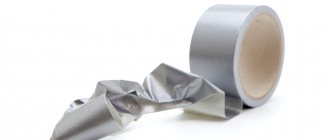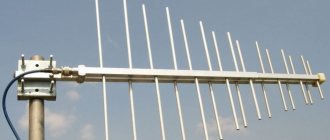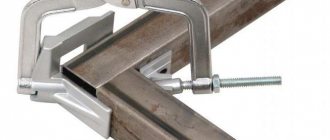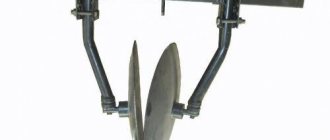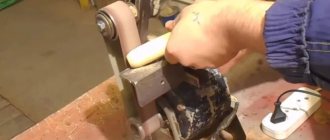Why a hook for fishing
This fishing attribute is always present among winter fishing enthusiasts, and especially among those who practice catching predators. Without a hook it makes no sense to go fishing at all. The fact is that pulling a large fish out of a hole is quite problematic, especially with bare hands, and even in the cold.
Without this simple device, it is difficult to cope with predators such as pike, pike perch, burbot, etc. in winter. The hook is also useful when fishing for large perch, carp, bream, etc. The mechanism of hooking is as follows: when the fish is already in the hole, it is caught with a hook on the lower jaw or gills.
The most important thing is that the hook is durable and does not let the fisherman down at the most crucial moment; in addition, the hook should not take up much space and fit freely in the fishing box. In this case, the hook can be made collapsible, which is the most practical and feasible.
Features of homemade pike baits
People have been making pike baits with their own hands since ancient times; during excavations, homemade products are still being found near river beds, which local residents used to catch fish. Many skills have been lost, but modern machines and devices have enabled craftsmen to make smaller and thinner baits.
Nowadays, making a bait for a predator with your own hands is not at all difficult for a person with certain skills, especially since handmade work has recently been highly valued. Most often made:
- turntables;
- vibrators;
- wobblers;
- spinnerbaits;
- foam fish.
Some people are capable of casting rubber, the size of which can vary greatly.
At first glance, homemade baits may look clumsy, especially those made of metal. But after the first cast and retrieve, anglers stop paying attention to the appearance. Many models of hand-made lures are passed down in the family by inheritance, so their work can be said to be tested over generations.
It is worth understanding that such products are produced both for open water fishing from the shore and on winter days from the ice.
Hook device
The general design of the hook can have a variety of designs, but its principle of operation is almost the same, which indicates the presence of a standard part. Any hook design consists of 2 main parts: a handle and a working part. The main material for making a handle is wood such as birch, ash, beech, maple, oak and others.
- The design of the handle is of no small importance, as is the quality of its manufacture. It must be carefully sanded and coated with water-repellent varnish or paint. A primer, which is rougher than enamel, will also be used for coating. The color of the coating is, of course, dark, so that the hook is easy to find in the snow. Naturally, it is not recommended to use metal to make a handle. In the cold, and even with water, your hands will instantly freeze to the instrument, even if they are wearing gloves.
- The working part of the hook is a metal hook made of steel wire, about 5 mm thick. A large fishing hook for catfish is suitable for making a hook.
Useful tips
Many people can make bait for catching a predator on their own; to do this, you need to have minimal skills in processing the selected material, as well as know some secrets. In order for the product to work, it is worth remembering the following subtleties:
- when making spoons and spinners, you should pay special attention to the shape of the petals; long ones are suitable for fishing in rivers, but round ones will work better in still water;
- the paint is applied to the wooden wobbler in several stages, giving each step the opportunity to dry thoroughly;
- You shouldn’t skimp on accessories for homemade products;
- for turntables, it is advisable to additionally equip the tees with feathers or lurex;
- The foam rubber for the fish can be pre-painted, or it can be left with a natural color.
The remaining subtleties of production will come with experience, without which you will not be able to create a catchy bait with your own hands.
Fishing with homemade baits often brings more results than using factory-made bait options. The manufacturing process is not complicated, and with helpers and more experienced comrades it can turn into an excellent hobby for many.
How to make a hook for ice fishing with your own hands
Most avid fishermen practice making their own fishing equipment, tackle, bait, etc. Making a hook is also possible at home. It is not only simple, but also interesting, although you can simply buy it at the store. At the same time, it may happen that he will not be able to satisfy his buyer. As for making it yourself, the result will be the device you need.
To make such a product you will need the following tools and materials:
- A piece of wood for making a cylindrical handle, 25 mm in diameter and 200-300 mm long.
- A piece of steel wire up to 1 meter long and up to 5 mm thick.
- Car clamps.
- A couple of washers.
- Large catfish hook.
- Welding machine.
- Bulgarian.
- Electric drill.
- Primer for wood in a dark shade.
How to make a gaff with your own hands.
The manufacture of the device begins with the handle. The manufactured handle is attached to the working part in two ways:
- A through hole with a diameter of about 5 mm is drilled inside the wooden blank, along its body. A washer is placed on one edge of the steel wire and welded. After this, a wooden blank is placed on the wire, followed by a washer, which is also attached to the wire by welding. In conclusion, you should use a grinder to cultivate the welding areas. That's it, the handle is securely fastened.
- The second method is even simpler than the first. One end of the steel wire is bent at an angle of 90 degrees. In a wooden blank, across its body and at a distance of 5 cm from the edge, a hole with a diameter of 5 mm is drilled. The wire is applied to the handle so that the bent end of the wire fits into the drilled hole. After this, the wire is pressed with two clamps and that’s it, the handle is securely fastened. All that remains is to cover it together with the wire with a primer.
The second method, although simpler, is not very attractive from an ergonomic point of view. In addition, the presence of metal on the handle, along with clamps, is not an optimal solution.
After the handle is securely fastened, you can begin to form the working part, which can be done in two ways. For example:
First option
The wire can simply be bent. To do this, you should measure the size of the hook. The optimal length of this device can be in the range of 0.7-1 meter. Having measured the required length, the wire is bent with a radius of about 15 mm. The length of the bent part can be 70-80 mm, and the rest is cut off with a grinder. Using the same grinder, the curved end is sharpened so that it is sharp.
DIY telescopic hook
Second option
This method of manufacturing the working part involves the use of a welding machine. The point of production is that a large catfish hook is welded to the end of the wire. To do this, measure out the required piece of wire and cut off the excess with a grinder. A hook is attached to the end of this wire by welding.
To ensure that the hook takes up little space, it can be made of two parts. To do this, use the same grinder to cut the device in half, and cut threads at the cut points. After this, the ends are connected using a coupling with an internal thread, up to 50 mm long.
Making a hook
Option 1 (using welding). A large catfish hook is welded to the end of the working part of the future hook. To do this, measure the required part of the wire, cut off the rest with a grinder, and weld a catfish hook to the edge. You can also use a grinder to clean up weld marks.
Option 2 (without the help of a welding machine). We measure the required length of the hook (from 70 to 80 cm will be more than enough), bend the rest, cut off the excess so that the length of the hook will be within 15 cm, then sharpen the edge to such a sharpness that the tip can scratch a nail, and The accessory is ready.
Types of hooks for fishing
It would seem that the hook is a fairly simple device, and what other options might there be. In fact, there are several designs, and they are different. In addition to the fact that they come in both summer and winter, they also come in folding and non-folding types.
Folding hook
This type of gaff is ideal for winter fishing, since when assembled it takes up minimal space. It consists mainly of 2 parts, although any number of parts can be formed using this principle. The connecting elements are hinges, which allow you to move the gaff from the transport position to the working position.
Flexible hook
The design of such a device is different in that inside all the components there is a hole through which a cable passes, 3 mm thick. There is a tension device on the handle with which the cable is tensioned. As a result of tension, all components are pressed tightly against each other. This gaff is not cheap. Made from thin stainless metal.
Telescopic hook
This version of the hook has one significant advantage: you can adjust its length, depending on the fishing conditions. Similar designs are produced more for summer fishing. This is understandable, since the presence of water and frost can negate all its advantages.
How to use a hook correctly?
It is unlikely that anyone would think that this tool also needs to be used correctly. This is especially true for those moments when you already need to hook a large fish. At such moments, the fisherman forgets about everything, as well as about what needs to be done at this moment. And yet, there are some rules that will allow this operation to be carried out without losing fish. Here they are:
- At these moments you should not fuss, making sharp and ambiguous movements. Composure and calmness are the guarantee of successful fishing.
- The hook should be lowered into the hole until the fish appears there.
- The fish should be hooked in the area of the front fins.
- The angler's movements must be deliberate and quick.
If the fish does not fit into the hole, then the hole should be widened, holding the fish with a hook.
Pocket safety hook
Real fishermen are, first of all, real craftsmen who constantly improve their fishing equipment, making them more practical. Bagorik did not go unnoticed by fans of fantasy and this is what came out of it.
To make such a device you will need:
- Telescopic antenna from an old radio.
- A couple of wine corks (maybe more).
- Hook for catfish (large).
- Some copper wire.
First you need to take a few wine corks. A hole is made through the entire body of the plug, with a diameter slightly less than the thickness of the first leg of the telescopic antenna. As a result, when all the plugs are put on the knee, you should get a light and comfortable handle.
Then take the hook and solder it to the end of the last bend. Whether to bite off the eye of the hook is a decision made by the manufacturer of the device. For reliability, it is better to wrap the soldering area with copper wire, which must be stripped of insulation. In this case, the eye of the hook can also be useful, which will contribute to a more secure fastening. That's all, the hook is ready for use.
